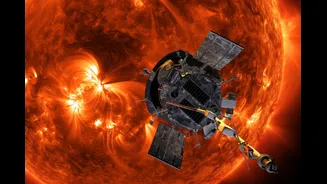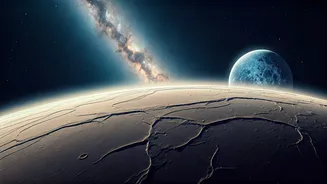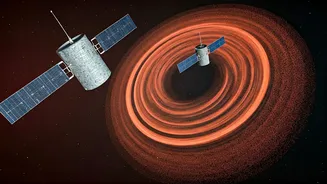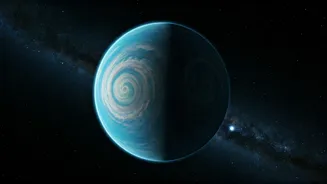Water: A Planetary Mystery
For a long time, the origins of water on planets have been a central topic in the study of planetary science. Generally, scientists have proposed that
water primarily arrived on terrestrial planets through external factors like asteroid impacts. This explanation, while widely accepted, presented certain puzzles. The current model suggests that water would have been delivered to a planet after the majority of its formation. This would mean that the water content would be relatively low during the initial development of the planet. However, a different hypothesis has been brought to the forefront, where planets might actually generate water themselves during their very formation, a concept that could significantly transform our view of habitable worlds.
Formation: Internal Processes
Planetary scientists are delving into the internal processes that might result in water generation. One of the primary theories suggests that water can be created through chemical reactions within the protoplanetary disk, a swirling cloud of gas and dust from which planets are born. Specifically, the interaction between hydrogen and oxygen, both readily available within these disks, could create water molecules. These reactions might take place during the planet’s formation, offering an internal water source. This hypothesis shifts the emphasis from external delivery mechanisms, providing a more inherent route for water to become part of a planet’s composition. This change has considerable implications for our understanding of how planets become habitable.
Implications: Habitable Worlds
If planets can intrinsically generate their water, the implications for the search for extraterrestrial life are very profound. Firstly, this mechanism increases the potential number of habitable planets. If planets don't need to depend on external water delivery, the likelihood of finding worlds with the necessary elements for life increases significantly. This also alters the criteria used in the quest for habitable zones around stars. It suggests that planets can exist in areas considered formerly unlikely to be suitable for water. The internal water production model enables the possibility of a far wider variety of worlds, all with the potential for liquid water and, conceivably, life.
Looking Ahead: Future Studies
The field of planetary science is actively investigating this new paradigm. Research is focused on detailed modeling of protoplanetary disks, looking at the chemical reactions and conditions which might enable water creation. Space-based telescopes will be essential in this research, observing young planetary systems and analyzing the composition of the atmospheres and disks. Moreover, future missions to study the geology and chemistry of other planets will be critical for testing these models. The goal is to obtain a more complete understanding of planetary formation, enabling the identification of potentially life-sustaining environments within our galaxy and beyond.













